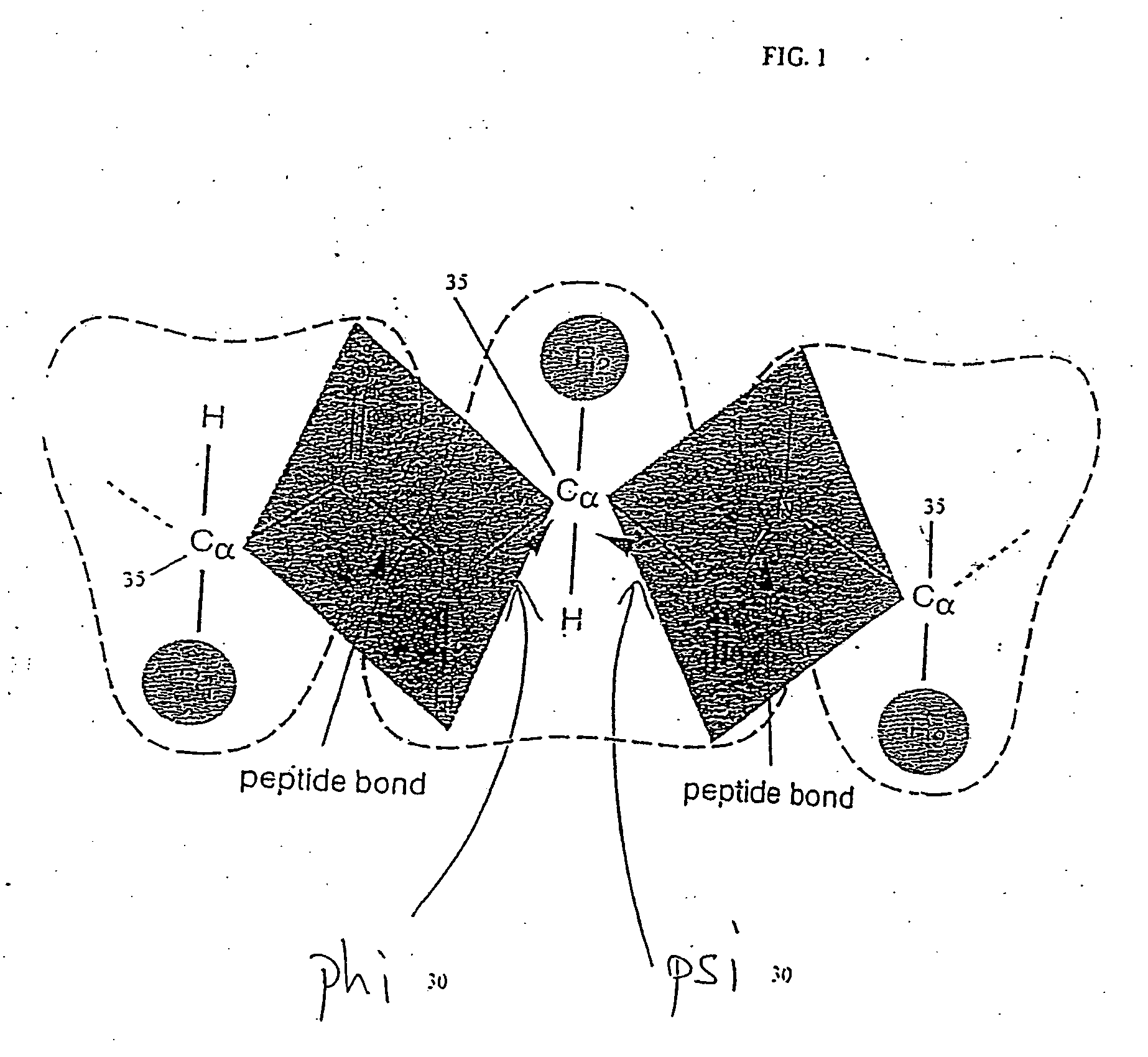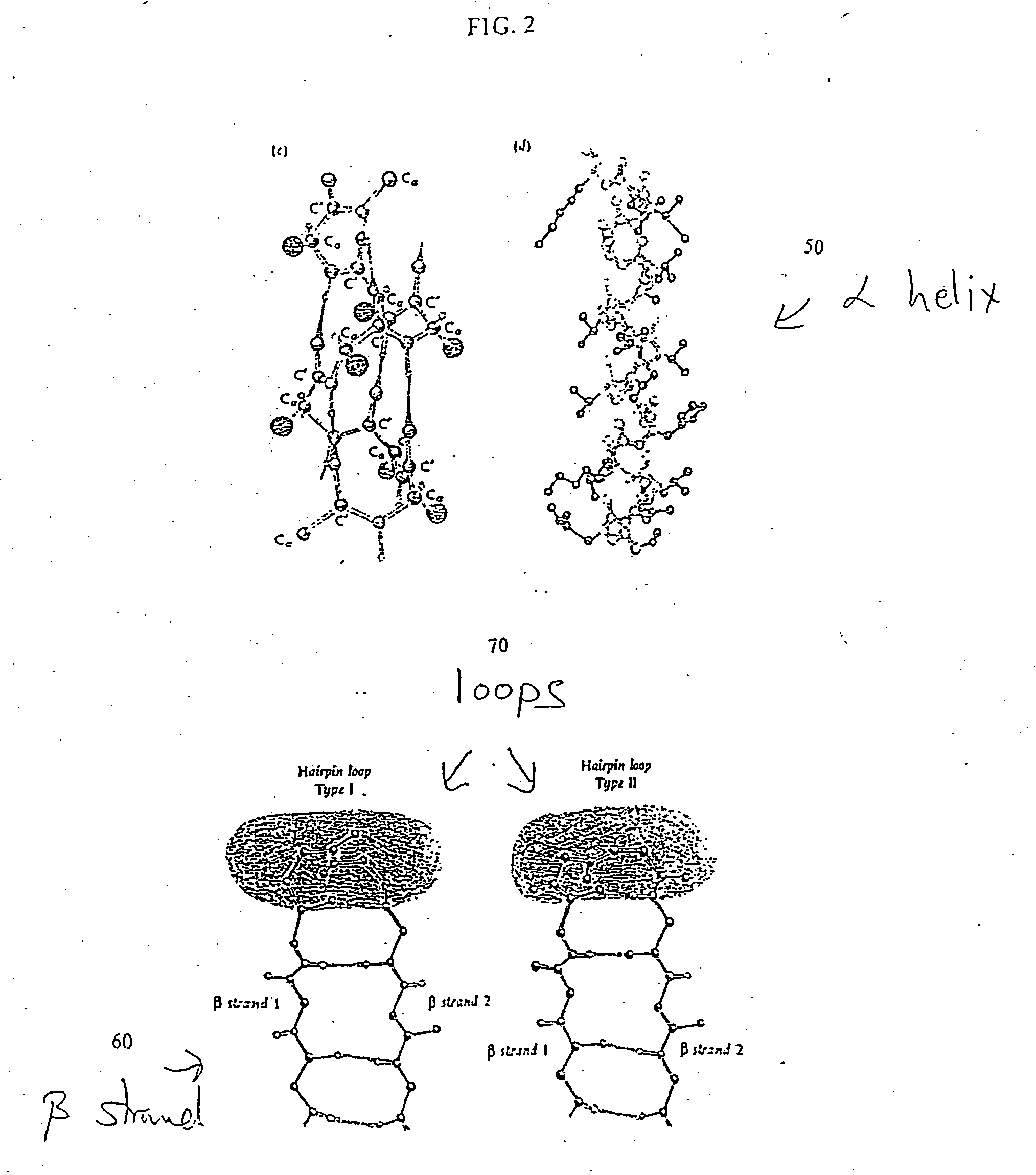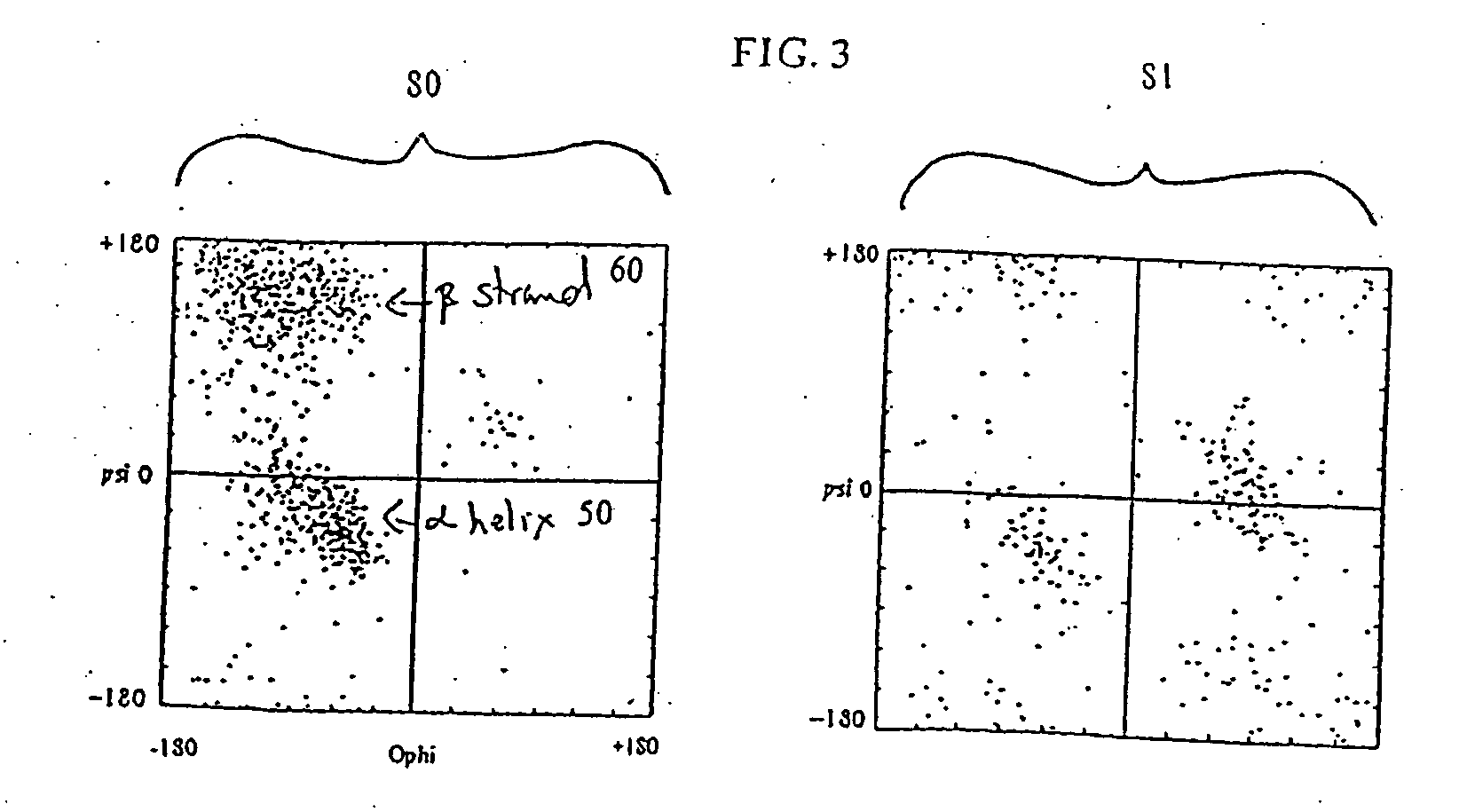Method and system for designing proteins and protein backbone configurations
a protein backbone and configuration technology, applied in the field of bioinformatics, can solve the problems of unanticipated medical benefits, no existing method of identifying qualitatively new designable protein configurations, etc., and achieve the effect of fast folding
- Summary
- Abstract
- Description
- Claims
- Application Information
AI Technical Summary
Benefits of technology
Problems solved by technology
Method used
Image
Examples
Embodiment Construction
[0029] The pattern of surface exposure along the chain is believed to dominate the folding of real proteins. That is, a particular sequence will generally adopt the fold that leaves the hydrophobic (“water fearing”) amino acids of the sequence buried in the core of the fold. Therefore, one concentrates on the pattern of surface exposure of each configuration.
[0030] The density of protein configurations in a space describing the pattern of surface exposure is slowly varying. This property can be shown to extend to more realistic descriptions of proteins, such as the description based on discrete phi-psi angles described below. Since the overall density of configurations is slowly varying, the distribution of configurations is insensitive to the details of the method by which configurations are generated. Hence, one can identify low density regions of configuration space even from a rough description of possible protein backbone configurations and with a rough approximate energy func...
PUM
| Property | Measurement | Unit |
|---|---|---|
| dihedral angle | aaaaa | aaaaa |
| surface exposure | aaaaa | aaaaa |
| hydrophobicities | aaaaa | aaaaa |
Abstract
Description
Claims
Application Information
 Login to View More
Login to View More - R&D
- Intellectual Property
- Life Sciences
- Materials
- Tech Scout
- Unparalleled Data Quality
- Higher Quality Content
- 60% Fewer Hallucinations
Browse by: Latest US Patents, China's latest patents, Technical Efficacy Thesaurus, Application Domain, Technology Topic, Popular Technical Reports.
© 2025 PatSnap. All rights reserved.Legal|Privacy policy|Modern Slavery Act Transparency Statement|Sitemap|About US| Contact US: help@patsnap.com



